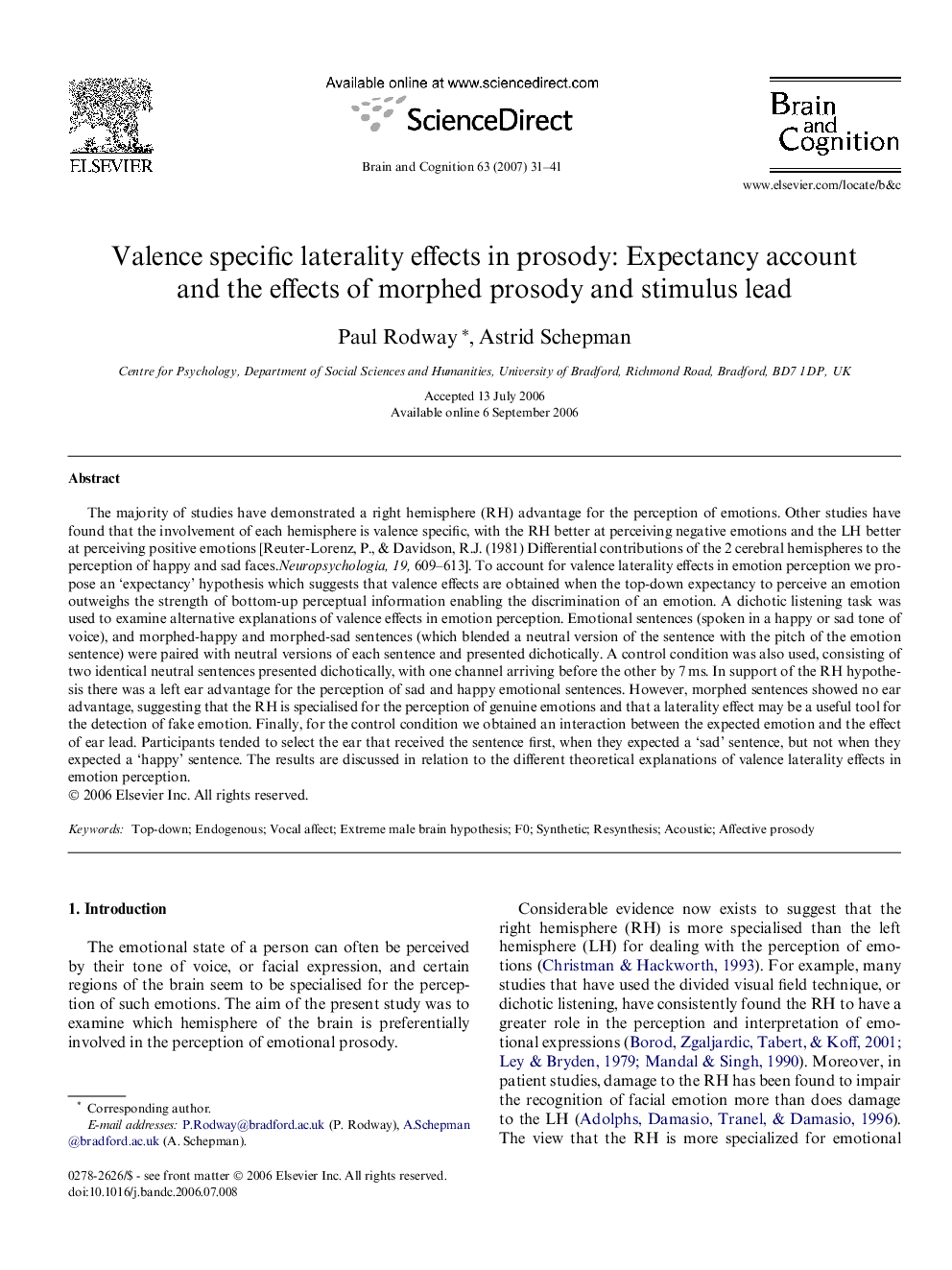| کد مقاله | کد نشریه | سال انتشار | مقاله انگلیسی | نسخه تمام متن |
|---|---|---|---|---|
| 925131 | 921309 | 2007 | 11 صفحه PDF | دانلود رایگان |

The majority of studies have demonstrated a right hemisphere (RH) advantage for the perception of emotions. Other studies have found that the involvement of each hemisphere is valence specific, with the RH better at perceiving negative emotions and the LH better at perceiving positive emotions [Reuter-Lorenz, P., & Davidson, R.J. (1981) Differential contributions of the 2 cerebral hemispheres to the perception of happy and sad faces.Neuropsychologia, 19, 609–613]. To account for valence laterality effects in emotion perception we propose an ‘expectancy’ hypothesis which suggests that valence effects are obtained when the top-down expectancy to perceive an emotion outweighs the strength of bottom-up perceptual information enabling the discrimination of an emotion. A dichotic listening task was used to examine alternative explanations of valence effects in emotion perception. Emotional sentences (spoken in a happy or sad tone of voice), and morphed-happy and morphed-sad sentences (which blended a neutral version of the sentence with the pitch of the emotion sentence) were paired with neutral versions of each sentence and presented dichotically. A control condition was also used, consisting of two identical neutral sentences presented dichotically, with one channel arriving before the other by 7 ms. In support of the RH hypothesis there was a left ear advantage for the perception of sad and happy emotional sentences. However, morphed sentences showed no ear advantage, suggesting that the RH is specialised for the perception of genuine emotions and that a laterality effect may be a useful tool for the detection of fake emotion. Finally, for the control condition we obtained an interaction between the expected emotion and the effect of ear lead. Participants tended to select the ear that received the sentence first, when they expected a ‘sad’ sentence, but not when they expected a ‘happy’ sentence. The results are discussed in relation to the different theoretical explanations of valence laterality effects in emotion perception.
Journal: Brain and Cognition - Volume 63, Issue 1, February 2007, Pages 31–41